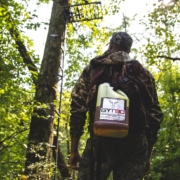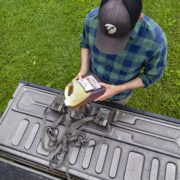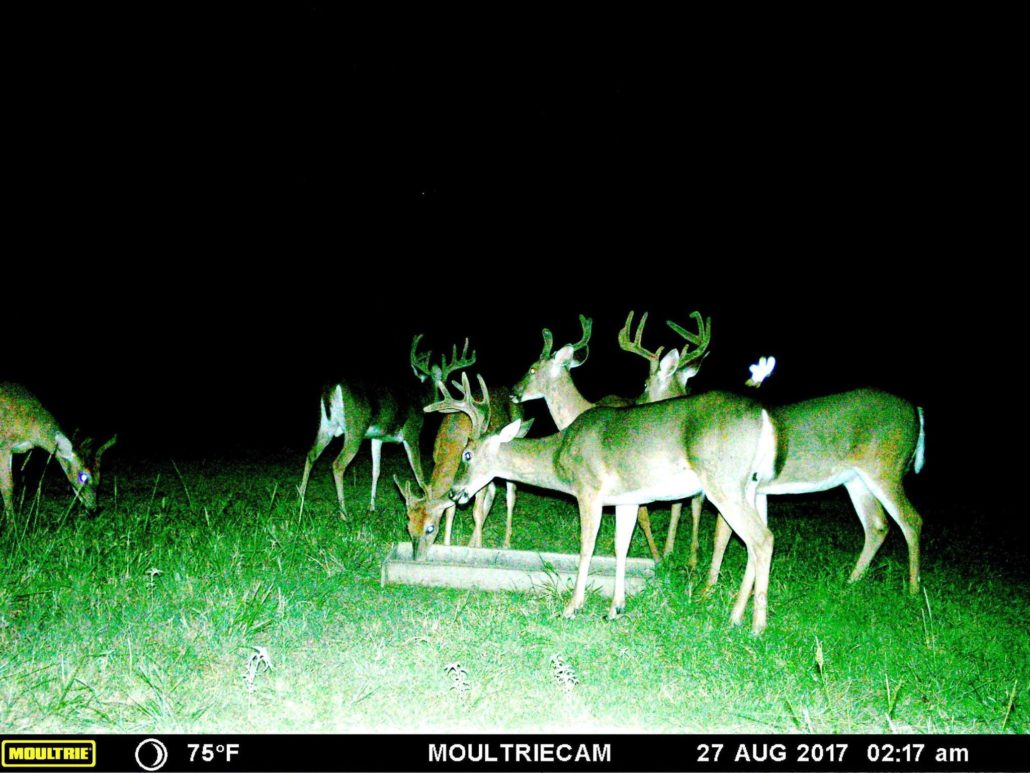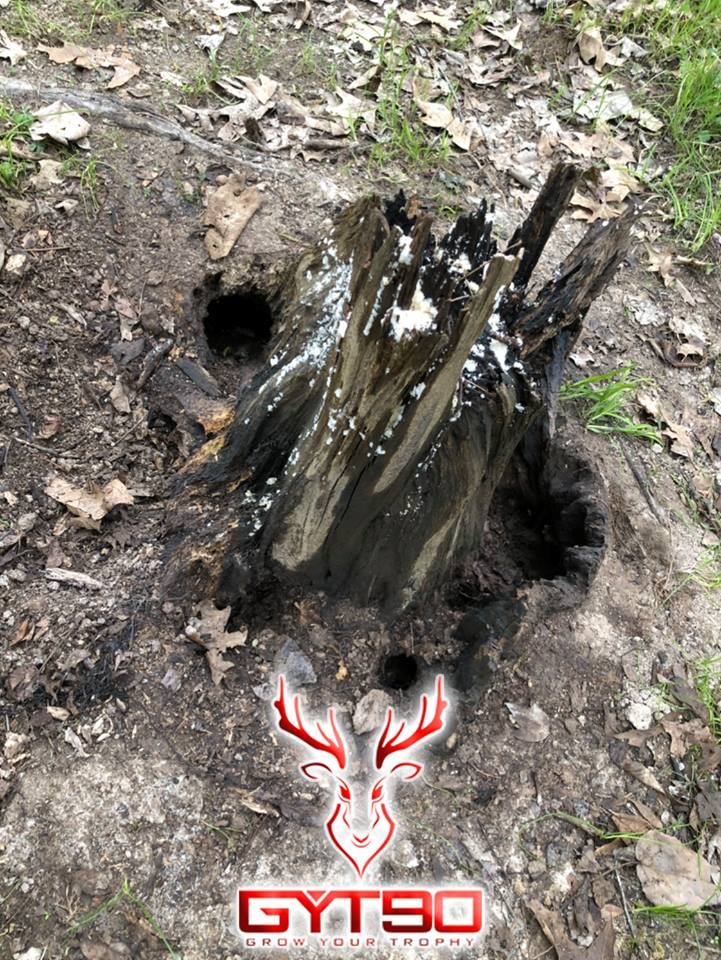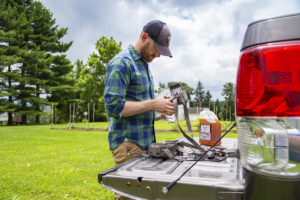How to Turn Summer Mineral Sites into Attractive Hunting Sites
Deer Hunting Bait Sites | Transitioning Deer Minerals to Fall Attraction
Most hunters are familiar with the benefits of providing their deer herds with supplemental nutrition. Whether you decide to provide mineral, the benefits range from helping you inventory bucks on your hunting property or collecting scientific data for management purposes to ensuring your herd has their complete nutritional needs in case nutrition is lacking. Although these are great reasons to use mineral sites, you may be wondering how effective they can be to use as an attractant for hunting. Although not all minerals serve as good attractants during the hunting season, GYT90 does. This article will discuss what makes GYT90 different from other minerals on the market and how to use it during the hunting season.
Why Deer Decrease Mineral Use
If you run trail cameras over your mineral sites for deer, you probably notice some obvious trends. Use of mineral sites generally increases with spring green up and is maintained throughout the summer. This is likely related to deer seeking out sodium to balance all of the water they are consuming that is contained in the new growth of vegetation. And although there isn’t much research out there, providing supplemental minerals likely also provides nutrition needed to both bucks who are growing their antlers and does that are producing milk for their fawns.
So why do deer decrease their use of these mineral sites in the fall? There are several reasons like alternative food sources such as acorns and supplemental food plots becoming more prevalent on hunting properties. In addition to those things, vegetation no long has the same water content in the fall as it did in early spring and summer. This means that deer no longer need to seek out sodium to balance their diet which ultimately decreases their use of mineral sites. This is where most supplemental minerals fall short, they don’t provide any additional components to continually attract deer throughout the fall, in turn, not making them useful attractants during hunting season. This leaves hunters in states where deer hunting over bait is legal scratching their head. How do you avoid reinvesting time, hunting pressure, and money into your summer mineral sites just to keep the attraction up throughout the hunting season?
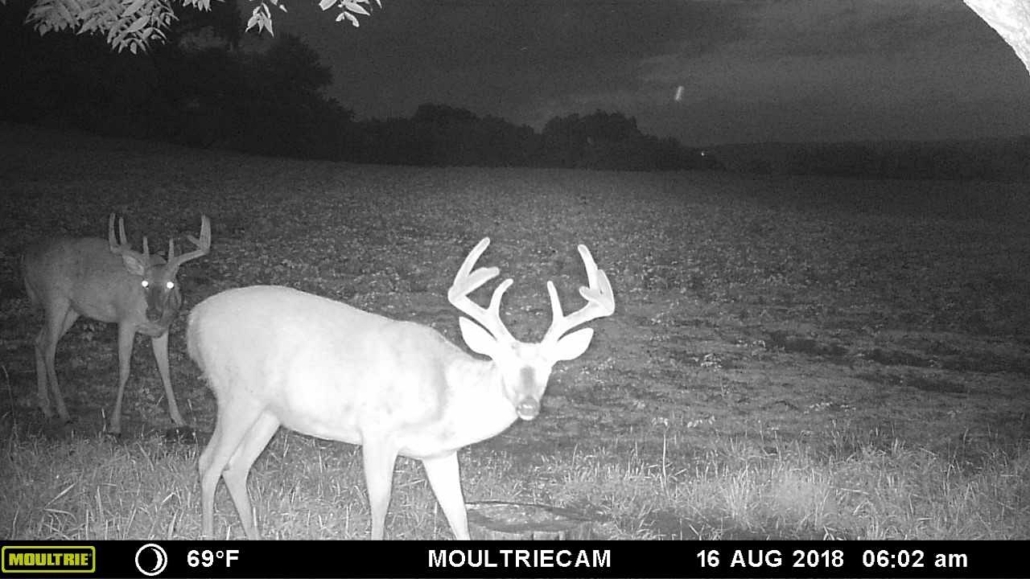
PHOTO: Summer mineral sites for deer decrease in use as sodium is no longer needed once vegetation loses its water content, creating the need to provide deer with additional attraction if a bait/hunting site is desired.
If you simply have a mineral lick for deer and fail to add additional attraction, the site will no longer be pulling deer like it was through the summer. You need to be able to provide something that deer associate with quality nutrition in the fall. They concentrate on food sources like standing grain and acorns. Soybeans, corn, and acorns give deer access to fats and calories, preparing their bodies for the winter and rut ahead. Keying in on these attraction points should be the focus on your deer hunting bait sites.
Finding a Product That Doubles as Mineral and Attraction
Arguably the best thing to find in this scenario is something that doubles as providing minerals and attraction. Corn and regular deer feed do not fit the bill by themselves since they do not provide the sodium for the summer. Most mineral blocks and licks do not provide the calories and fats, not to mention the scent of associated quality nutrition like corn, acorns, or soybeans. The trick is finding something that offers sodium, minerals, scent, taste and attraction for both summer and fall.
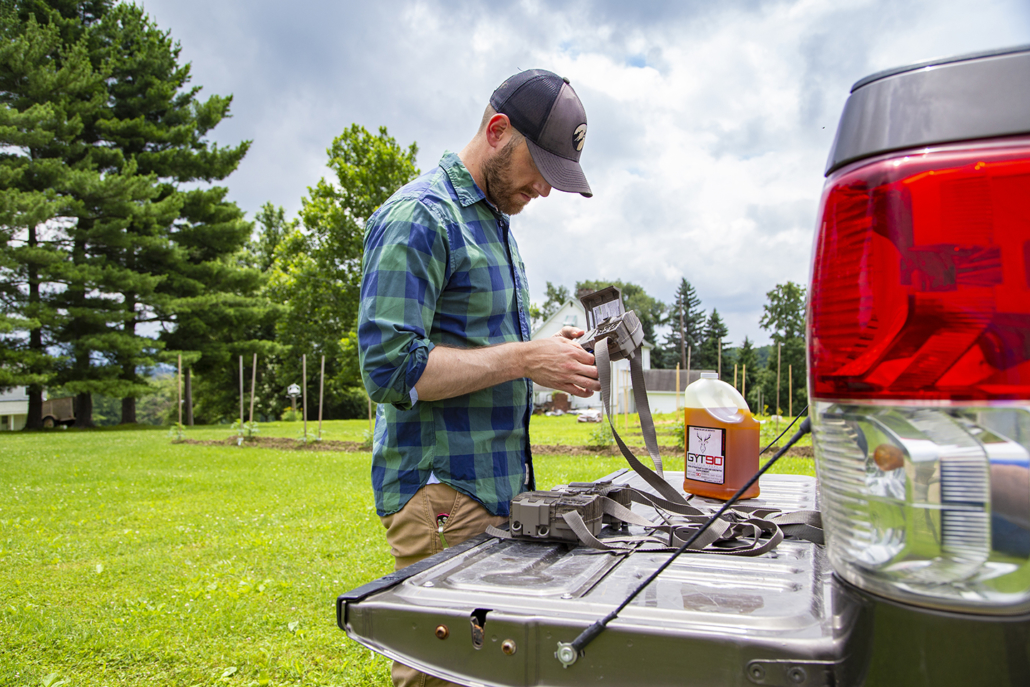
PHOTO: GYT90 is a product that offers sodium, minerals, scent, taste and attraction for both summer and fall hunting.
GYT90 is one such product. At its core GYT90 is a deer mineral and feed supplement. So what makes GYT90 different from other deer mineral supplements on the market? First, it contains more than 90 minerals that deer can use in addition to unrefined sea salt and natural crude soybean oil. Why is this good? GYT90 has everything a deer could want in both summer and fall…hitting key features hunters should be looking for. It provides them with the sodium they need in the spring and summer time, but also provides them with healthy fats that are provided by the natural crude soybean oil. The soybean oil hits deer with both soybean scent and flavor profiles that they already associate with quality food sources. Long story short, GYT90 always provides something deer need and are attracted to.
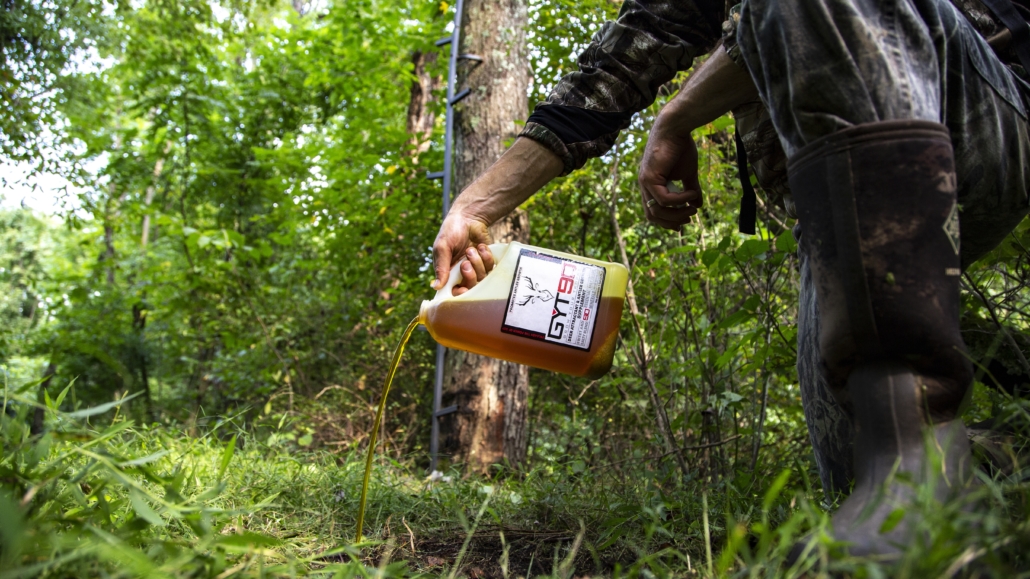
PHOTO: With scent and flavor profiles of soybean oil, deer are instinctively attracted to GYT90 mineral and hunting sites.
Another thing that makes GYT90 a great supplement is it comes in a liquid form. This means that you can mix GYT90 with just about anything. For example, you can mix GYT90 with corn and place it out for deer. The corn may serve as an additional attractant to pull deer into an area. You can also mix it with supplemental feed. Deer may be reluctant to start eating supplemental feed when you first start providing it. Mixing an attractant like GYT90 will likely help speed up that process of deer getting used to eating supplemental feed.
How to Use GYT90 for Hunting
So how do you maximize your use of GYT90 so deer get the supplements they need but you also can take advantage of attracting deer to an area during the hunting season? The first thing to consider is where you are going to establish your mineral site. Some obvious areas are in food plots or agricultural fields where deer are already frequenting. You can also consider using wooded areas to establish sites. It may be easiest to find a staging area going out to a food plot or agricultural field for this. Wherever you decide to establish a mineral site, there are two things to consider. You will want to pick a site that sets you up best to hunt the area. This means you can access the area on multiple wind directions with minimal probability of detection when entering and leaving the stand. The next thing to consider is when to begin establishing the site. You will want to do this as early as possible. The more time you give deer to get used to visiting a site, the better.
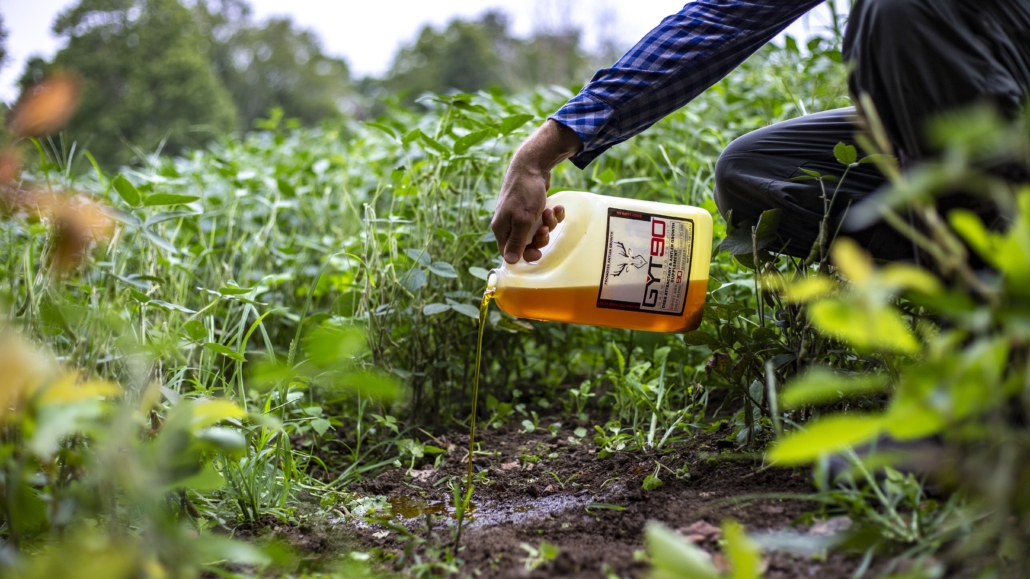
PHOTO: Appling GYT90 deer mineral supplement and attractive deer bait in areas of frequent travel like soybean fields make great hunting bait sites.
Now that you’ve picked out your location, how do you use GYT90? That’s easy because you can use GYT90 in several ways. As previously mentioned, you can add it to corn and place it in some type of trough on the ground to attract deer. You can also simply pour it over a stump or on a log if you are in the woods. Again, whenever you are choosing a location to establish a mineral site, be sure it is in an area that you can easily hunt.
There are multiple benefits to using supplemental minerals on your hunting property. But if you are hoping to find a mineral that also serves as an attractant during the hunting season, then GYT90 is for you. Be sure to give GYT90 a try this fall. You never know, it may just help you harvest your hit list buck or even help to put some meat in the freezer.

